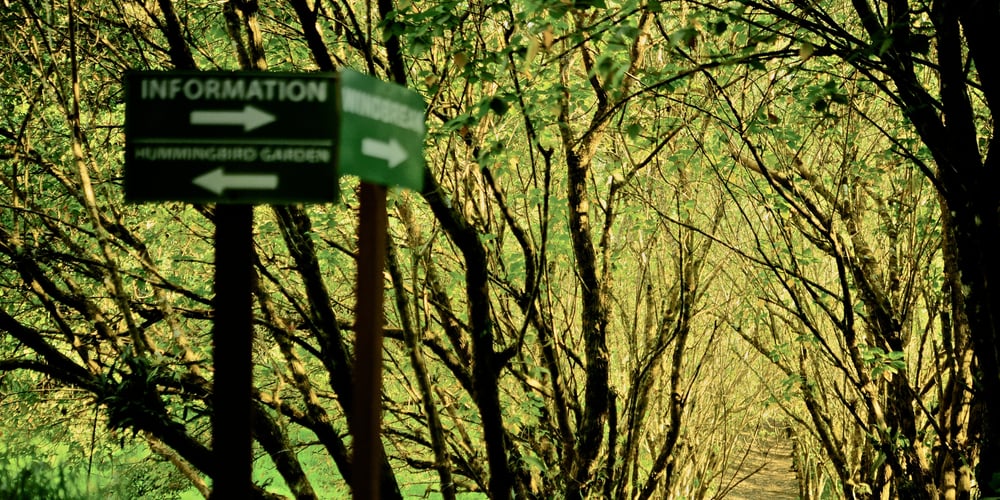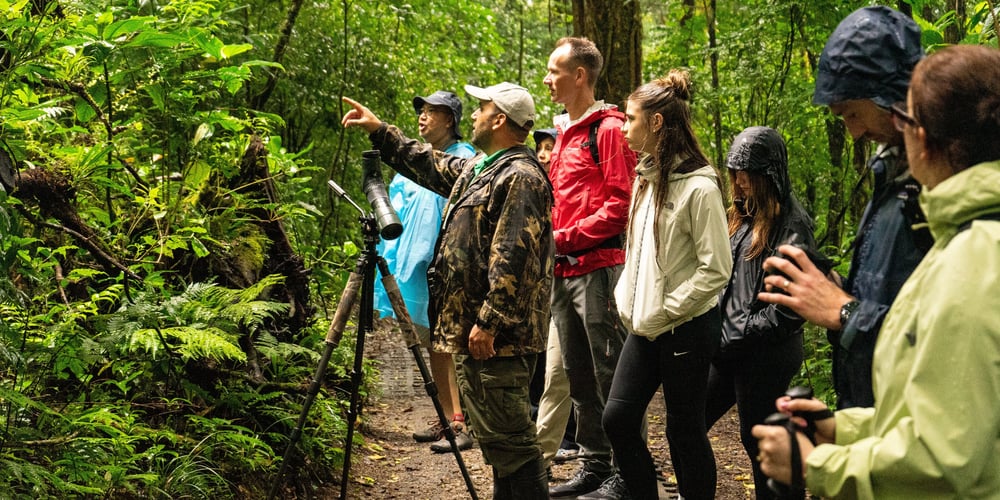
Monteverde’s Biodiversity: A Day of Discovery in the Cloud Forest
Biodiversity is the cornerstone of life on Earth, and nowhere is this more evident than in Monteverde’s breathtaking cloud forest. Defined by its incredible array of species, biodiversity is not just about numbers—it’s about the intricate web of relationships that sustain ecosystems. In Monteverde, this web includes everything from the tiniest fungi to the majestic apex predators, all playing a critical role in the forest’s health and resilience. Understanding and celebrating this interconnectedness is vital, as each element supports and depends on the others, forming a harmonious balance that is both fragile and awe-inspiring.
This remarkable balance is why biodiversity matters. Every species, no matter how small or seemingly insignificant, contributes to the ecosystem's overall health. Biodiversity ensures resilience against environmental changes, promotes soil health, regulates climate, and provides food and resources. This interconnectedness is especially striking in Monteverde’s cloud forest, as it thrives in a delicate dance with the ever-changing seasons.
The Food Chain: A Symphony of Interconnected Roles
 Monteverde’s cloud forest is a vibrant tapestry of life, and the food chain serves as its foundation. Each organism, from decomposers to apex predators, contributes to this dynamic system. Let’s explore each part of the food chain with examples that highlight their essential roles.
Monteverde’s cloud forest is a vibrant tapestry of life, and the food chain serves as its foundation. Each organism, from decomposers to apex predators, contributes to this dynamic system. Let’s explore each part of the food chain with examples that highlight their essential roles.
The Decomposers: Nature’s Recyclers
Fungi are the unsung heroes of the cloud forest, breaking down organic material and returning vital nutrients to the soil. One standout species is the bracket fungus, often found on fallen logs. This fungus decomposes tough lignin and cellulose, creating nutrient-rich soil that supports plant life. Without decomposers like fungi, the forest floor would be buried under debris, and plants would struggle to grow.
The Producers: The Forest’s Green Engine
Producers, primarily plants, form the base of the food chain by converting sunlight into energy through photosynthesis. The strangler fig is a fascinating example in Monteverde. Starting life as an epiphyte high in the canopy, it eventually grows roots that reach the ground, overtaking its host tree. This process creates microhabitats for countless species, from insects to birds, while providing food for fruit-eating animals like toucans and monkeys.

The Primary Consumers: Herbivores on the Move
Primary consumers, such as herbivores, feed on the producers and, in turn, sustain higher levels of the food chain. The agouti, a small rodent found in Monteverde, plays a dual role as both a seed eater and disperser. By burying seeds like those of the almendro tree, agoutis inadvertently support reforestation and provide food sources for future generations of animals.
The Secondary Consumers: The Opportunistic Omnivores
Secondary consumers, including omnivores, occupy a versatile niche in the food chain. The white-faced capuchin monkey is a perfect example. These intelligent creatures eat a varied diet of fruits, insects, and small animals, helping control insect populations while also spreading seeds across the forest. Their role bridges the gap between primary consumers and higher predators.

The Apex Predators: Guardians of the Balance
At the top of the food chain are apex predators, which help regulate populations and maintain ecological balance. The elusive jaguar, and puma, Monteverde’s apex predators, prey on herbivores like deer and peccaries, preventing overgrazing and ensuring the health of plant communities. Though rarely seen, their presence is vital for the ecosystem’s stability.

Seasons and Species: A Changing Landscape
Monteverde’s cloud forest is a dynamic environment, with its biodiversity shifting alongside the seasons. During the dry season (December to April), many species become more visible as they seek water and food sources. This is a prime time for birdwatching, with resplendent quetzals and migratory hummingbirds making their presence known. Clearer skies also make spotting mammals like coatis and howler monkeys easier.
In the green season (May to November), the forest comes alive with the sound of rain and the sight of blooming plants. Amphibians, like the iconic red-eyed tree frog, thrive in the wetter conditions, while epiphytes like orchids and bromeliads showcase their vibrant colors. Guides tailor their tours to match these seasonal variations, ensuring visitors experience the forest’s unique offerings year-round.

Our Role in the Food Chain
As visitors marvel at Monteverde’s biodiversity, it’s important to recognize our place in this intricate web. Humans have a profound impact on the food chain, both positive and negative. Conservation efforts, sustainable practices, and responsible tourism can help protect this fragile ecosystem, ensuring its survival for future generations. Conversely, habitat destruction and pollution can disrupt the delicate balance, leading to cascading effects throughout the food chain.
By understanding and respecting the roles each species plays, we can contribute to the health of Monteverde’s cloud forest. Whether it’s through supporting local conservation projects, reducing our ecological footprint, or simply taking a moment to appreciate the wonders of nature, every action counts. Let’s work together to preserve this extraordinary place, so its biodiversity continues to inspire and sustain us all.
All In A Day’s Work

Just for fun, we asked Oscar, one of Monteverde’s guides to tell us about the many creatures that he saw on his tours today in Monteverde’s Forests, and this was his response:
“Monteverde is a truly remarkable place because, as a guide, every day is different, and you never know what to expect. What you see also depends on whether you take a daytime hike or a nighttime one, since creatures are generally diurnal (active during the day) or nocturnal (active at night).
Today I did three tours, and while I was out I spotted 8 different kinds of birds, including the popular but often elusive Quetzal, a three wattled-bell bird (which is rare), a turquoise-browed mot mot (shown below), the clay-colored thrush, a great kissadee, a toucan, and two varieties of hummingbird.

We also spotted a pair of coatimundis, and these are pretty common, mostly because they aren’t shy of humans. We heard a howler monkey though we couldn’t spot him high up in the canopy, but we did see a sleeping puma, and an agouti, as well as some common green lizards and plenty of butterflies!”
For more information on any of these amazing creatures, check out our post Fantastic Wildlife of Monteverde.
Discover the breathtaking biodiversity of Monteverde's cloud forest with Ocotea Tours & Transfers. Our expert guides will take you on an unforgettable journey through this vibrant ecosystem, revealing the intricate connections that sustain its beauty. Book your nature tour today and experience the magic of Monteverde like never before.

.jpg?height=500&name=Discover%20Monteverdes%20Fascinating%20Frogs%20at%20the%20Ranarium%20(15).jpg)
